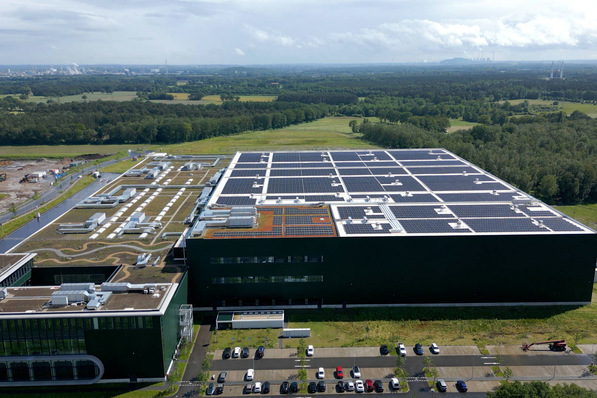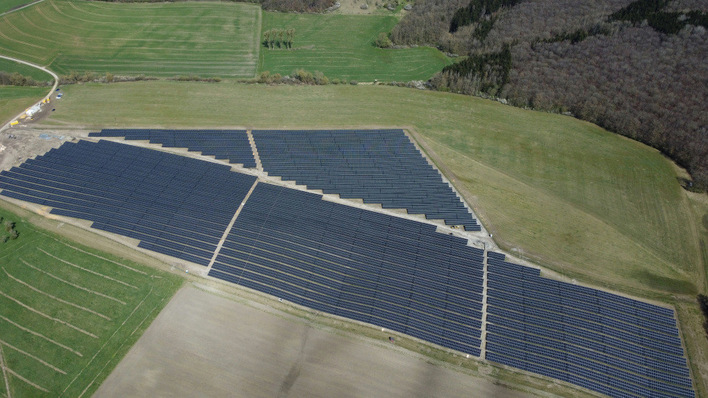The film manufacturer 3M Germany has installed a solar ground-mounted system on its own company premises in Hilden. In this way, the company shows that not only roof surfaces can be used for the production of solar power, but also other surfaces on a company's premises. After all, planners are often faced with the challenge of installing a solar system for a commercial enterprise whose company roof would not support the generator or is insufficient to provide the required amount of electricity. For the NRW Renewable Energy Association (LEE NRW), this is a successful example of the potential that solar energy offers industrial and commercial enterprises for a secure and affordable electricity supply.
3.5 million kilowatt hours per year forecast
This is because the project planners have erected a large open-space plant with more than 8,000 solar panels on the so-called Schäfchenwiese (little sheep's meadow) next to the 3M factory in Hilden. The panels are elevated in an east-west orientation in order to maximise self-consumption in the company and to stabilise energy production.
See also: Commercial solar self-consumption pays off
With its 3.7 megawatts, the plant produces up to 3.5 million kilowatt hours of clean solar electricity every year, according to planners' forecasts. This means that 3M Germany, which is one of the leading suppliers of reflective and coloured films, industrial adhesive tapes and road markings in this country, can cover up to ten per cent of its annual electricity requirements at the site with solar power.
Built without subsidies
3M does not receive any subsidies or feed-in tariffs under the Renewable Energy Sources Act. This is because the company uses the electricity entirely itself. "The 3M plant in Hilden is a very good example that impressively demonstrates the advantages that photovoltaics offers industrial and commercial companies in particular," emphasises Jan Dobertin, Head of Sales and Business Development at B&W Energy.
Many such installations are necessary
The company, based in Heiden, Münsterland, planned and built the greenfield solar power plant for 3M and implemented it under a leasing model. "With the new solar plant, 3M can not only reduce its carbon footprint. Thanks to photovoltaics, 3M has a power supply that can be planned very well in terms of price for the part of its electricity demand that is covered by it," Dobertin outlines another advantage.
Also interesting: RWE commissions its first floating solar plant
Christian Mildenberger, Managing Director of LEE NRW, also praises 3M for taking the step towards solar land use. "This is a role model, we need many such plants throughout the state," Mildenberger emphasises. He sees the cornerstone for this in the coalition agreement of the new black-green state government, which explicitly provides for opening up land in industrial and commercial areas for renewable energies. "We have been waiting for this for a long time," says the head of LEE NRW.
Quadruple installed output
Among other things, this is how the state government intends to quadruple the expansion of photovoltaics compared to the currently installed output to 24 gigawatts. "This quadrupling should be the lower end of the bar," Mildenberger emphasises. To achieve this, thousands of new solar plants with an output of more than two gigawatts would have to go into operation every year throughout the state, calculates LEE NRW. (su)







